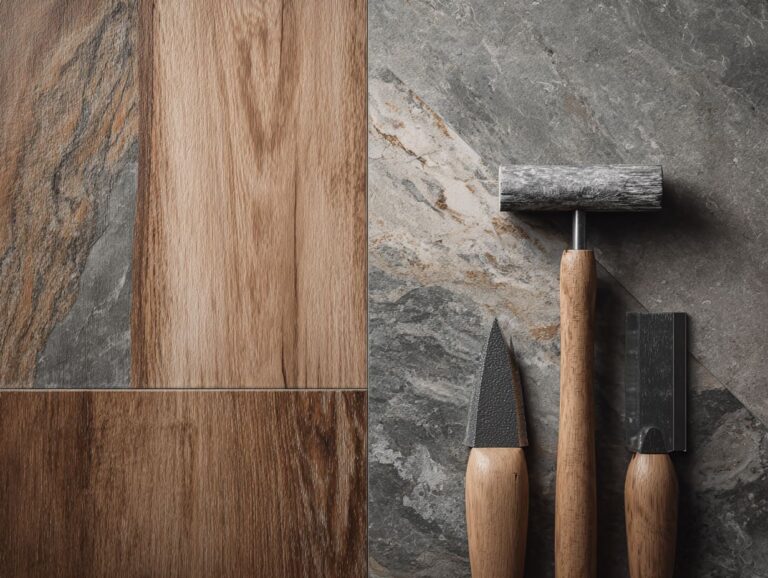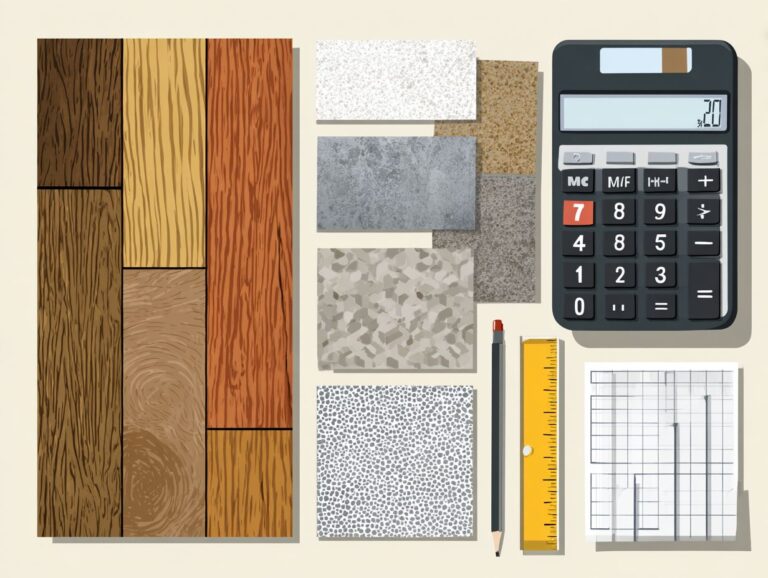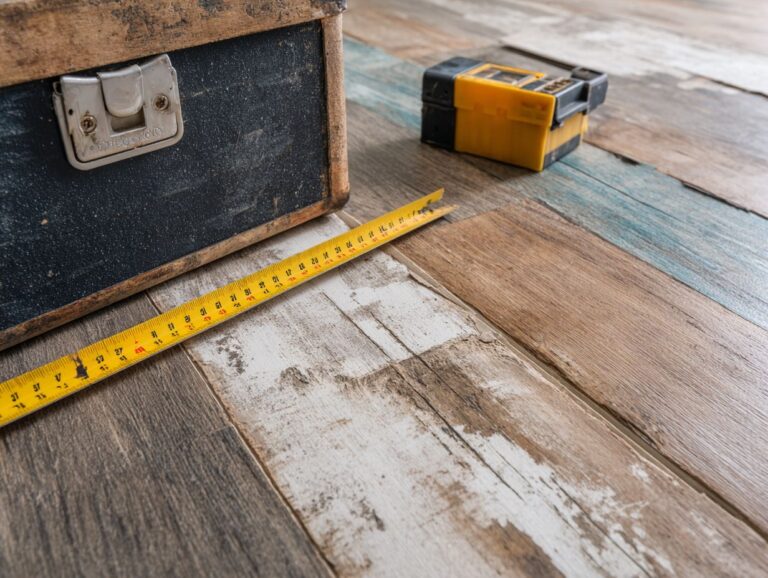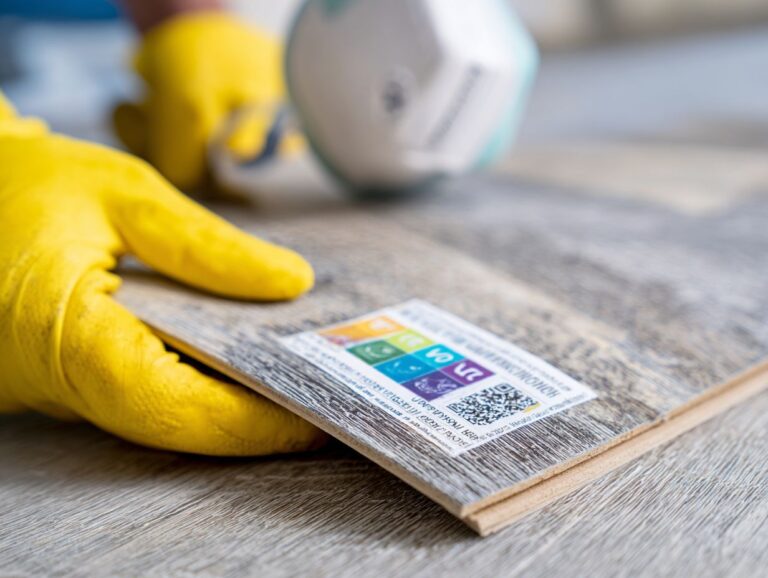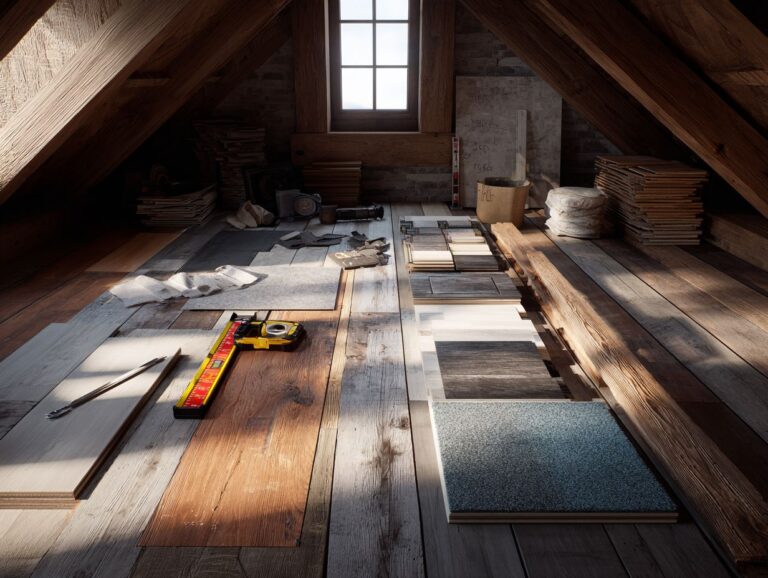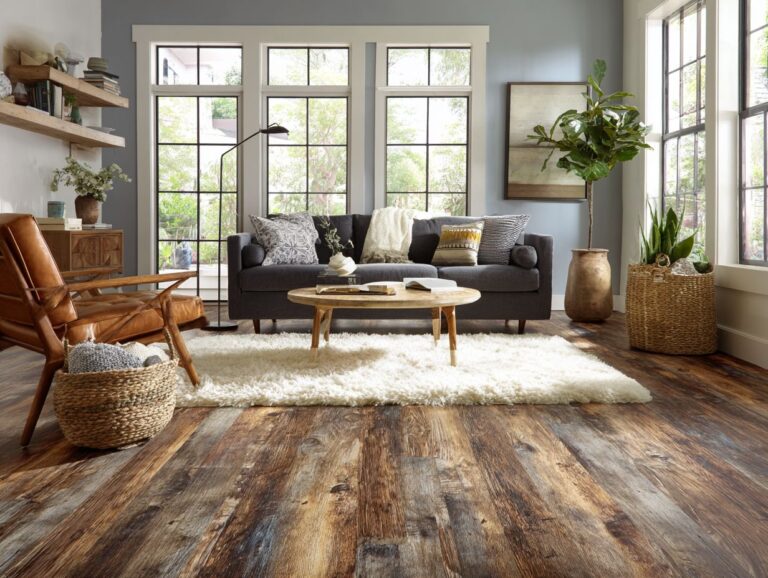Best Flooring Over Concrete Slabs – Moisture Barriers
Picking the right type of flooring for concrete slabs is important, especially with potential moisture issues. With choices like durable vinyl flooring, you can change your room while handling possible moisture issues. TAJ offers a range of solutions that combine style and practicality. In this article, we’ll look at the right flooring options, important moisture barriers, and expert advice to make sure your investment lasts, keeping your home dry and attractive.
Key Takeaways:
Contents
- Concrete Moisture Testing Methods and Statistics
- Types of Flooring Suitable for Concrete Slabs
- Moisture Barriers: What You Need to Know
- Choosing the Right Moisture Barrier for Your Flooring
- Installation of Moisture Barriers
- Common Mistakes to Avoid
- Maintenance and Care for Flooring Over Moisture Barriers
- Frequently Asked Questions
- What is the best type of flooring to use over a concrete slab?
- Why is a moisture barrier important when installing flooring over a concrete slab?
- Can any moisture barrier be used for flooring over a concrete slab?
- What are the benefits of using vinyl flooring with a moisture barrier over a concrete slab?
- Can I install hardwood flooring over a concrete slab with a moisture barrier?
- Do I need to use a moisture barrier if my concrete slab is already sealed?
Importance of Choosing the Right Flooring
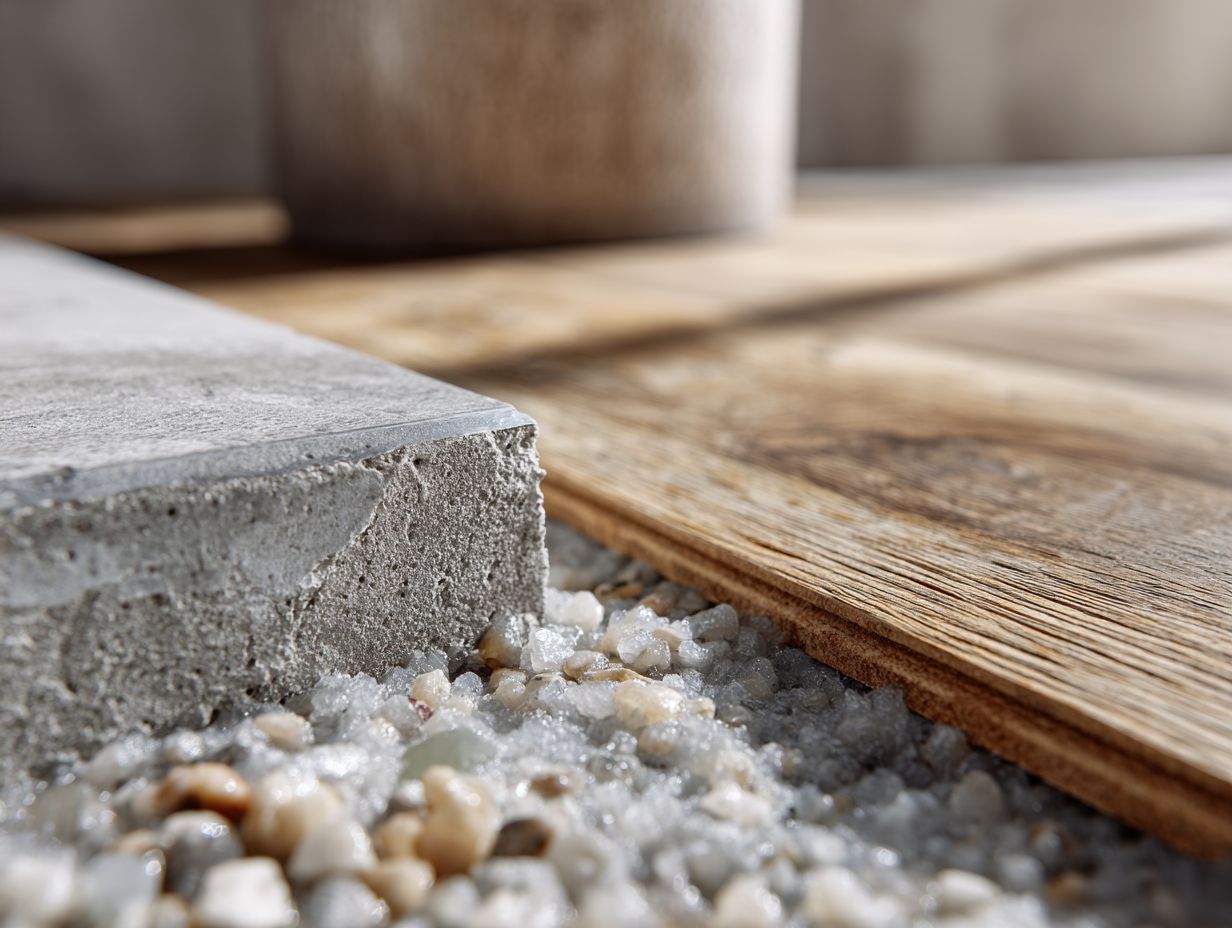
Choosing the appropriate flooring can greatly improve how a space looks and functions, providing comfort and lasting quality for busy areas.
For instance, in a family room, vinyl or laminate flooring can provide a warm, inviting look while being resistant to scratches and easy to clean, which is important for kids and pets.
In a workshop, an epoxy-coated concrete floor is tough enough to resist spills and heavy tools, and it needs little upkeep. Worth exploring: basement flooring solutions that focus on moisture and mold prevention, which can offer additional durability and protection in similar environments.
Studies reveal that 75% of homeowners feel more satisfied after updating their floors, highlighting its significance in any renovation.
Concrete Slabs and Moisture Problems
Concrete slabs are porous and can retain moisture, which poses significant challenges when choosing resilient flooring types like vinyl and laminate.
To avoid problems with moisture absorption, it’s necessary to do a humidity test, like ASTM F2170, before installing the flooring. This test measures the relative humidity within the slab, helping determine its moisture levels.
Ideally, the humidity should not exceed 75% for successful flooring integrity. If you find there is too much moisture, think about using a moisture barrier or choosing flooring made for damp conditions, like waterproof vinyl or special laminate.
Following these preventive steps will greatly decrease the chance of bending or mold developing as time goes by.
Concrete Moisture Testing Methods and Statistics
Concrete Moisture Testing Methods and Statistics
The Concrete Moisture Testing Methods and Statistics section suggests a focus on assessing moisture content in concrete, a critical factor affecting durability, integrity, and suitability for construction purposes. Although the JSON data provided does not include specific datasets, the topic itself is important in construction and engineering.
Concrete Moisture Testing Uses different techniques to precisely check moisture levels, making sure concrete surfaces are prepared for next steps like flooring, coatings, or sealants. Too much moisture in concrete can cause adhesive to fail, mold to grow, and structural damage, so checking moisture levels is essential.
Common testing methods include:
- Calcium Chloride Test: This measures moisture vapor emissions from the concrete surface over a specified period. It’s widely used due to its simplicity and cost-effectiveness, but can be affected by ambient conditions.
- Relative Humidity Test: Sensors installed in drilled holes in the concrete track internal humidity levels, giving detailed information about moisture content in the entire slab.
- Electrical Resistance Test: Electrodes measure moisture in concrete by checking its resistance. This method provides fast results but needs adjusting for different concrete types.
- Gravimetric Method: This process measures the moisture in a sample by comparing its weight before and after drying it in an oven. It gives exact results but takes more time and work.
These testing methods confirm that concrete surfaces meet industry standards for moisture levels, preventing possible problems linked to excessive moisture. By studying how moisture impacts concrete, contractors and engineers can make informed choices to increase the strength and efficiency of their construction projects.
Types of Flooring Suitable for Concrete Slabs
Picking the best flooring for concrete slabs includes considering choices such as vinyl, laminate, tile, and carpet. Each type has its own advantages and installation requirements.
Vinyl Flooring
Vinyl flooring, particularly luxury vinyl, offers a waterproof solution ideal for moisture-prone environments like garages and basements.
Luxury vinyl feels very soft underfoot, which makes it a common choice for homes.
Setting it up is easy; lots of products snap together without glue, saving both time and money on work.
Pricing typically ranges from $2 to $7 per square foot based on quality and design. For installations, compatible adhesives, like Roberts 6700 or Henry 650, provide a secure hold and resist moisture.
This combination of features makes vinyl flooring a practical and attractive choice for various applications.
Laminate Flooring
Laminate flooring provides a cost-effective and durable option for concrete slabs, designed to mimic the look of hardwood without the high maintenance.
This type of flooring typically consists of three layers: a top wear layer, a design layer that replicates wood grain, and a core layer for stability.
It’s best installed with a vapor barrier underlayment to prevent moisture damage, particularly in basements or damp areas.
Keeping it clean is simple; just sweep regularly and mop with a damp cloth from time to time to maintain its appearance.
Laminate flooring costs between $1 and $5 per square foot, providing a budget-friendly option for busy households.
Tile Flooring
Tile flooring is a strong and water-resistant option for covering concrete, perfect for places that might get wet or have high moisture levels.
Popular tile types include:
- Ceramic
- Porcelain
Both are known for their resilience. Ceramic tiles typically range from $5 to $10 per square foot, while porcelain can be slightly more expensive, fluctuating between $10 and $15.
For installation, consider hiring a professional for a seamless finish, but DIY options can save costs if you’re handy.
To keep your tiles clean, simply sweep and mop them regularly. Put sealant on them every few years to make sure they stay waterproof.
Carpet Flooring
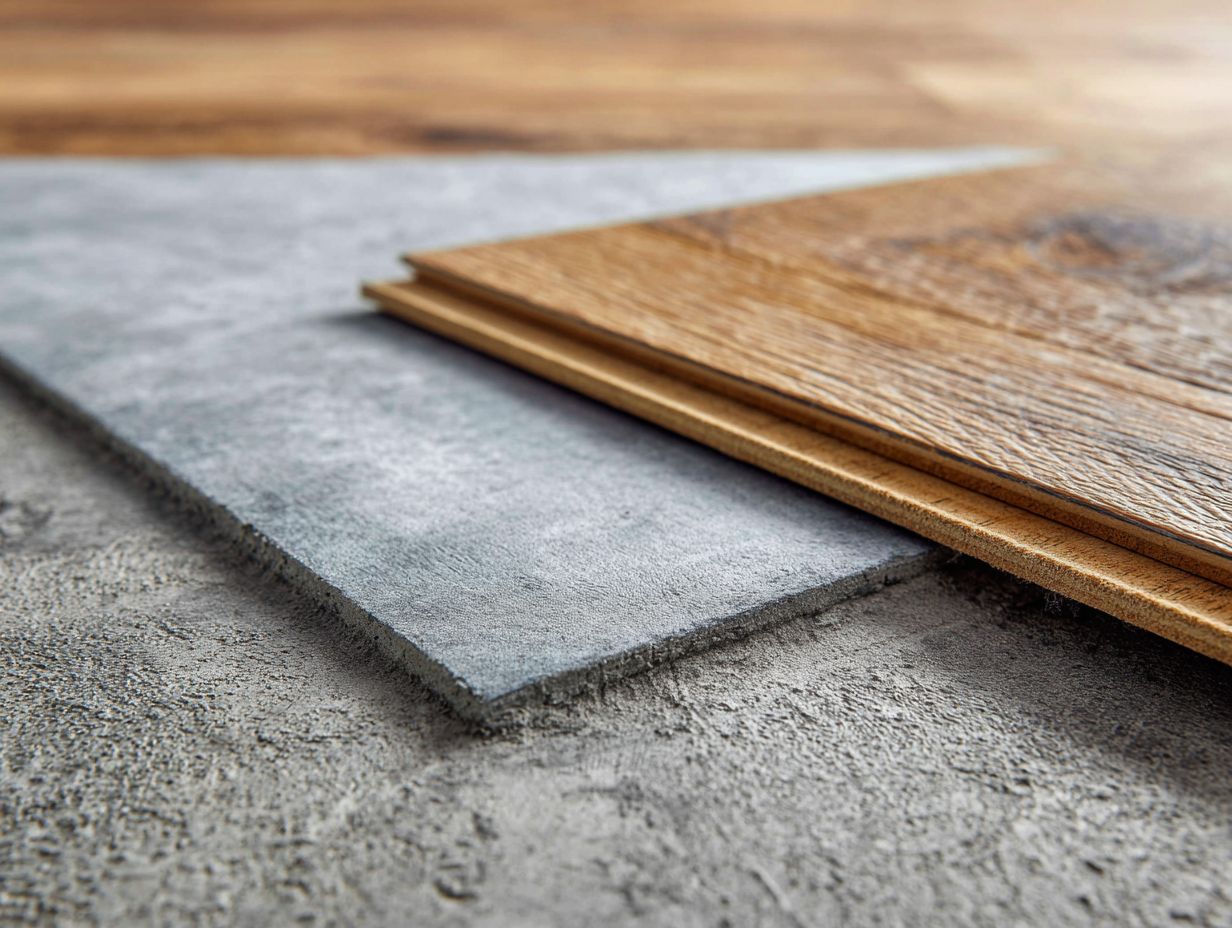
Carpet flooring offers a warm and comfortable solution over concrete, perfect for living spaces but requires careful moisture management.
To improve comfort and stop problems caused by moisture, it is important to put a protective layer under the carpet. This barrier can range from $2 to $8 per square foot, depending on the quality.
Proper installation techniques, such as ensuring the subfloor is dry and leveling the surface, help avoid mold growth. If you’re not confident about installing it yourself, hiring a professional might cost more, but it usually makes sure your carpet flooring lasts longer and works well, protecting what you’ve spent.
Moisture Barriers: What You Need to Know
Moisture barriers are important for preventing water damage to floors, especially when placed on concrete slabs.
They come in different types suitable for various situations, and if you’re dealing with basement installations, understanding moisture and mold prevention can be pivotal. You might find this guide on basement flooring solutions particularly helpful.
Definition and Purpose of Moisture Barriers
A moisture barrier is a protective layer that stops water from seeping into flooring materials, important for keeping the floor working well when placed over concrete surfaces.
Using a moisture barrier is essential in high-humidity areas such as basements, where excess moisture can lead to mold growth and flooring failure.
For example, polyethylene sheets act as an effective barrier due to their water-resistant properties and affordability.
In bathrooms, a liquid-applied barrier can be used under tiles to protect vulnerable surfaces.
When putting hardwood on concrete, think about using a foam layer. It stops moisture, softens the floor, and reduces noise.
Always assess necessary applications based on your specific environment and flooring type.
Types of Moisture Barriers
Different types of moisture barriers, such as polyethylene sheets and special underlayments, serve various flooring applications, each with unique installation characteristics.
Polyethylene sheeting, typically costing between $0.10 and $0.50 per square foot, is a widely used and effective solution for preventing moisture in basements or crawl spaces. Its durability and resistance to vapor penetration make it an excellent choice for concrete floors.
On the other hand, specialized underlayments designed for laminate or vinyl flooring often offer additional benefits, such as sound insulation and cushioning. These underlayments typically cost between $0.20 and $1.00 per square foot, offering support based on the type of flooring and the specific conditions.
When to Use a Moisture Barrier
Using a moisture barrier is important in certain situations, especially in basements, garages, or places with high humidity, to keep flooring lasting longer.
To find out if a moisture barrier is needed, test humidity levels with ASTM F1869, which checks moisture vapor release from concrete. If the results exceed 3 pounds per 1,000 square feet over 24 hours, installing a moisture barrier is advised.
Types of barriers include:
- Polyethylene sheeting for cost-effectiveness
- More advanced options like vapor-retarding membranes for added protection
Implementing these measures proactively can significantly reduce the risk of mold and damage to flooring materials.
Choosing the Right Moisture Barrier for Your Flooring
Choosing the right moisture barrier for your flooring means looking at different things, like the climate, how well materials work together, and how much you can spend.
Factors to Consider
When choosing a moisture barrier, consider factors such as the flooring type, moisture levels in the area, and specific manufacturer recommendations for compatibility.
For instance, if you’re installing laminate flooring in a basement, use a polyethylene sheet moisture barrier, as it’s effective in reducing moisture transfer.
On the other hand, wood floors require a vapor retarder like 6-mil polyethylene, ensuring no moisture seeps up from the ground. Always check moisture levels before installation; if they are over 4%, you need a stronger barrier.
Consult the flooring manufacturer’s specifications to confirm the recommended barriers, preventing costly installation issues down the line.
Cost vs. Benefit Analysis
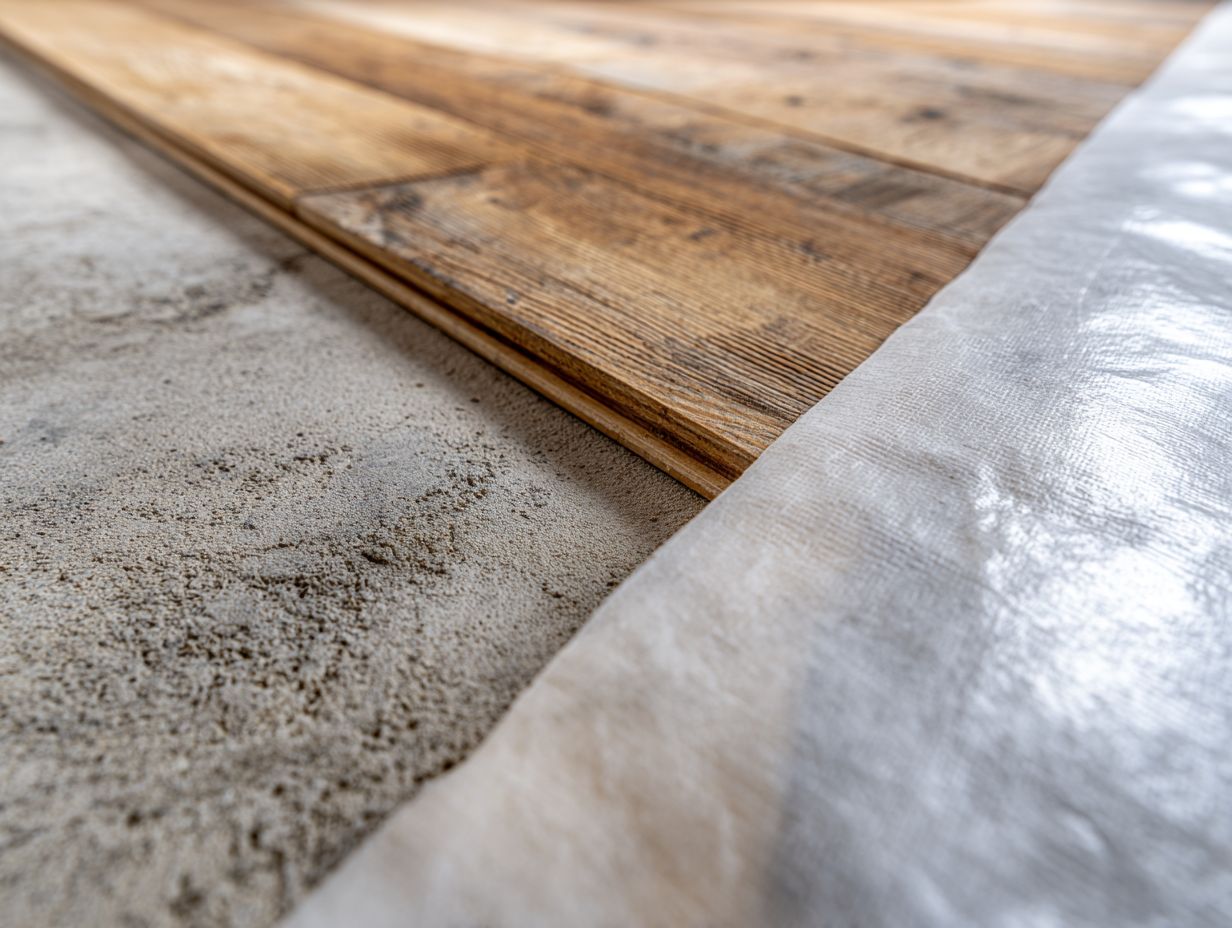
Examining the costs and benefits of moisture barriers allows you to assess if investing in flooring protection against moisture damage is worthwhile over time.
Investing in moisture barriers can prevent extensive repairs and premature replacements, yielding substantial ROI.
For instance, installing a moisture barrier may cost around $1,500, but avoiding water damage repairs can save up to $5,000 or more over time.
Take into account the lifespan of flooring materials-carpets can wear out in just a few years without protection, while those with barriers can last over a decade.
By focusing on these protective measures, homeowners protect their flooring and save money down the road.
Installation of Moisture Barriers
Moisture barriers need to be placed correctly to work well. This needs careful planning and exact methods to get the best results. For those interested in flooring options that complement moisture barrier techniques, exploring rigid core vinyl flooring might be beneficial as it offers both durability and ease of installation.
Preparation of the Concrete Surface
Getting the concrete ready requires a complete cleaning and checking the moisture level to make sure the moisture barrier sticks properly and works as it should.
- Start by sweeping the area to remove loose debris.
- For stubborn stains, use a pressure washer or a scrub brush with a degreaser.
- After cleaning, assess moisture levels.
- A reliable method is the plastic sheet test: tape a clear plastic sheet to the concrete and leave it for 24 hours. If moisture accumulates under the sheet, you need to wait longer for it to dry.
- Alternatively, employ a humidity meter to gauge the moisture content, aiming for less than 4% prior to laying the barrier.
Step-by-Step Installation Guide
Follow this step-by-step guide to effectively install moisture barriers over concrete slabs for optimal flooring protection.
- First, prepare the surface by cleaning any debris and ensuring it’s dry. This may take about 30 minutes.
- Next, measure and cut the moisture barrier (usually 6 mil polyethylene) to fit the slab, allowing a 12-inch overlap at seams; have a utility knife and measuring tape ready. This should take another 30-45 minutes.
- Lay the barrier down flat, overlapping seams, and secure them with duct tape.
- Seal edges with waterproof tape for extra security.
Complete the entire installation in 1-2 hours for reliable flooring durability.
Common Mistakes to Avoid
Steering clear of typical errors in flooring installation can help you save both time and money while ensuring moisture barriers function properly.
Ignoring Moisture Tests
Skipping moisture tests can cause major issues like mold and floor damage, which makes them an essential part of the installation.
For instance, a residential project in Seattle skipped moisture testing before installing hardwood floors. As a result, moisture levels exceeded safe thresholds, leading to substantial mold development beneath the planks.
The homeowner had to spend over $20,000 on remediation and replacement, illustrating the financial risks involved. To avoid these problems, use tools such as a moisture meter that connects to a smartphone for quick readings.
Make sure to test before setting up to avoid wasting time and money.
Using Incompatible Materials
Using incompatible materials, such as pairing certain adhesives with vinyl flooring, can undermine the entire flooring system’s performance and lifespan.
For instance, using a water-based adhesive with vinyl planks, which typically require a solvent-based adhesive, can lead to poor bonding and uneven surfaces. Make sure to read product labels or manufacturer’s instructions to check compatibility.
Always opt for products specifically recommended for vinyl installations, like Roberts 6650 or Henry 370D, known for their strong adherence. Consider environmental factors; temperature and humidity can affect material performance.
Try a small area first to check if it sticks well and lasts.
Maintenance and Care for Flooring Over Moisture Barriers
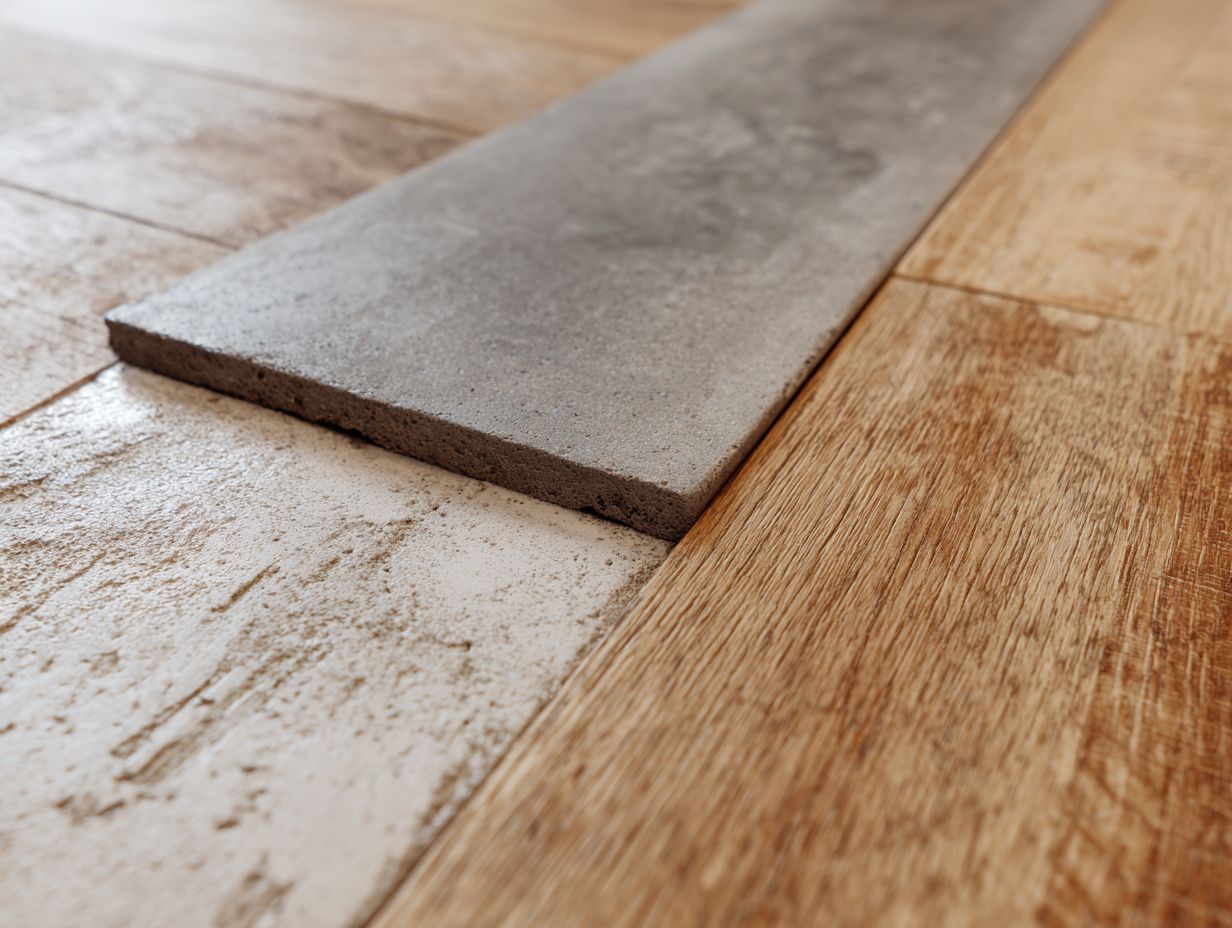
Taking care of floors placed over moisture barriers is important to keep them looking good and working well over time.
Regular Inspections
Regularly checking floors and moisture barriers helps identify problems early, supporting their long-lasting strength and function.
To perform thorough inspections, look for signs of water damage, such as warping or discoloration, every six months. Check the edges of the flooring for gaps and make sure the moisture barriers are undamaged.
Use a moisture meter to assess humidity levels within the flooring; readings above 12% could indicate a problem.
Create a checklist:
- Look for water stains
- Ensure seals are tight
- Inspect for wear patterns
Addressing these issues early can save significant repair costs later.
Cleaning Tips
Implementing proper cleaning techniques for various flooring types over moisture barriers helps maintain appearance and prevent damage from moisture accumulation.
Use a pH-neutral cleaner to clean hardwood floors every 1-2 weeks. Avoid water-based solutions that can warp the wood.
Tile floors benefit from a vinegar and water solution monthly, ensuring you don’t use acidic cleaners that may dull the finish.
For laminate, opt for a damp mop with a mild detergent weekly; steer away from abrasive scrubbing pads.
Always keep windows open or use fans during cleaning to reduce dampness. Use green products to prevent exposure to strong chemicals, ensuring your surroundings are safe and tidy.
Frequently Asked Questions
What is the best type of flooring to use over a concrete slab?
The best type of flooring to use over a concrete slab is one that has a good moisture barrier, such as vinyl, tile, or laminate.
Why is a moisture barrier important when installing flooring over a concrete slab?
A moisture barrier is important because concrete slabs can absorb moisture from the ground, which can cause damage to certain types of flooring. A moisture barrier prevents this moisture from reaching the flooring.
Can any moisture barrier be used for flooring over a concrete slab?
No, it is important to choose a moisture barrier specifically designed for use with flooring over concrete slabs. These types of barriers are typically thicker and more durable to withstand the pressure from the concrete slab.
What are the benefits of using vinyl flooring with a moisture barrier over a concrete slab?
Vinyl flooring is a great option for concrete slabs because it is durable, moisture-resistant, and easy to install. When paired with a moisture barrier, it provides an extra layer of protection against potential water damage.
Can I install hardwood flooring over a concrete slab with a moisture barrier?
While it is possible to install hardwood flooring over a concrete slab, it is not recommended as the moisture from the slab can cause the hardwood to warp and buckle. It is best to use a moisture-resistant flooring option, such as vinyl or tile.
Do I need to use a moisture barrier if my concrete slab is already sealed?
Even with a sealed concrete slab, it is still recommended to use a moisture barrier when installing flooring. This provides more protection and helps your flooring last longer.
